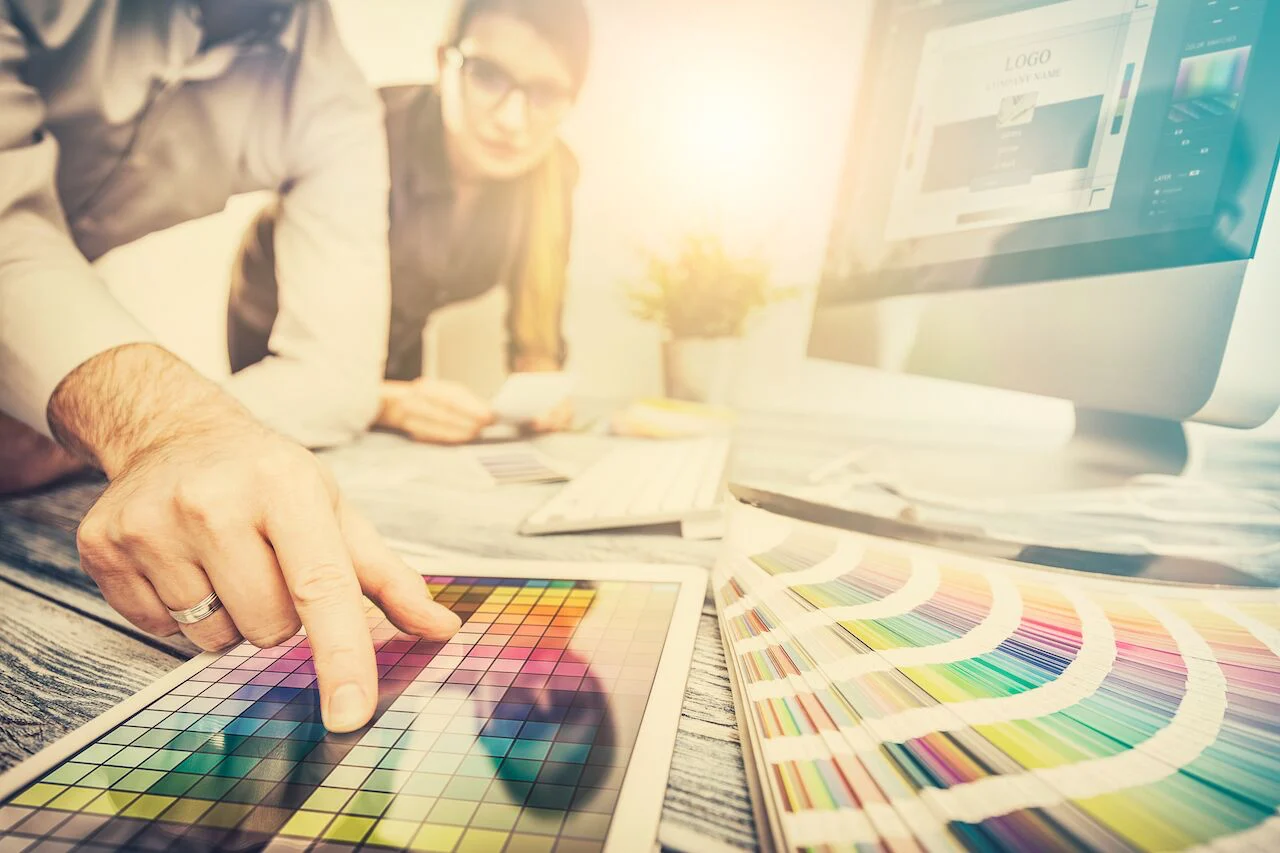There is a lot to consider when branding your company. You need to establish a brand that your customers know and trust. Recognisable. Resonating. Reliable.
But choosing a common theme for your website, equipment, and marketing materials takes so much more than just picking your favourite colour and whacking it on everything. You need to appeal to customers not only visually, but subconsciously in order to have the impact you desire.
The science behind colour choices
As a child, or when speaking to children now, “what’s your favourite colour?” is often one of the first and most important questions to ask when meeting someone new. Substantial research has shown that, well, kids are really onto something there.
Design consultants Colorcom have found that consumers “make a subconscious judgment about a person, environment, or product within 90 seconds of initial viewing and that between 62% and 90% of that assessment is based on colour alone.”
Colour choice is critical to getting customers to buy. The study shows that 92.6% of people put most importance on visually factors when purchasing a product. When you bring brand identity into the mix, consistent colour themes help to make your business more familiar.
Colorcom report that brand recognition can be increased by up to 80% with effective use of colour throughout all of your website, marketing, packaging, and logo. But how do you know which colour to use?
Psychology and colour
Colours play a huge role in how your company is perceived and can have a direct impact on how customers view your products and services.
As noted in the research above, much of this is subconscious. Colour psychology is not an exact science, but it can certainly be helpful when it comes to choosing how you portray your brand.
Here are some of the top colour choices used by brand’s today, and what they say about your company.
Red
Commonly associated characteristics:
- Power
- Excitement
- Passion
- Energy
The most obvious example of colour psychology in branding has to be McDonald’s and KFC, but a whole host of fast food restaurants from Wendy’s and Burger King to Pizza Hut and Domino’s all use the colour red within their logos and branding. More than just a coincidence, right?
Studies have shown that red is perceived as stimulating, exciting, and frequently associated with activity. Further research also shows that the colour red can increase our heart rates, which may trigger appetite according to some theories.
Even without biological reactions, red has become synonymous with fast food over the years; resulting in the colour making consumers hungry. This can be great information to have if you’re running your own fast food restaurant or designing a website to sell your edible products.
The colour red is widely used in other B2C branding too, not just in the food industry. Its insinuation of excitement and energy can be a great way of getting your customers moving.
Green
Commonly associated characteristics:
- Health
- Growth
- Nature / eco-friendly
- Prosperity
Green is a very interesting colour when it comes to emotional perception, as the shade you choose can elicit a different response.
Bright, yellow-greens tend to be energising; giving off a fresh and healthy vibe perfect for medical practices like Nuffield Health. Deep, blue tints are generally more relaxing, such as the shade used by Starbucks. Finally, an earthy tone is perfect for emphasising an eco-friendly company’s natural and ethical ties.
Blue
Commonly associated characteristics:
- Logic
- Trust
- Security
- Cleanliness
As with green, different shades of blue can give off different emotional responses. Many technology motoring brands including Ford and Samsung opt for rich, dark blues to suggest intelligence and reliability.
Lighter blues are often used by the healthcare industry to signify cleanliness. It is hard to find a toothpaste or mouthwash brand that doesn’t have blue somewhere on their packaging or website.
If you’re looking to appeal to a wider audience, blue is the way to go since YouGov established it is the world’s favourite colour. However, it has been noted that blue is also an appetite suppressant, so bear this in mind if you are looking to brand your food company.
Purple
Commonly associated characteristics:
- Wisdom
- Luxury
- Spirituality
- Wealth
Deep and vibrant, purple has been used as a sign of royalty and luxury for centuries. The reason behind this is rather interesting, as it goes back to the price of purple dye being too expensive for anyone but the very wealthy to afford.
Nowadays, brands like Cadbury’s, Premier Inn, and Liberty London all spring to mind with their luxurious purple themes. This makes it the perfect colour for exuding an air of sophistication for your hotel, estate agency, or lavish products.
Ready to show your brand’s true colours?
As you can see, the colours you choose to brand your company can have a major impact on how your customers perceive you – even if they’re not conscious of their judgement.
There is a great chart showing the emotions elicited by different colours here.
If there is one thing all marketers can agree on, it’s that your branding needs to be consistent. At Maxweb, we create beautiful and easy-to-use websites that emit your company’s brand with every page.
Our expert web designers and graphic artists are on hand to help you develop the perfect site that shows your trustworthiness and professionalism for an affordable price. Contact us today to find out how we can help you.
Posted on Thursday, November 1st, 2018 in Branding.
